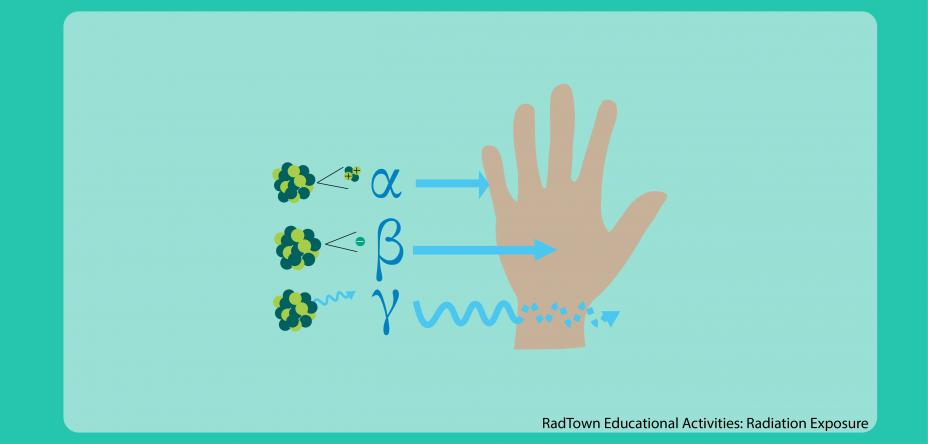RadTown Radiation Exposure: Vocabulary Activities
The concepts surrounding radiation can be complex. By conducting a vocabulary activity before beginning an activity or series of activities, students will have a shared base knowledge. This activity is intended for middle and high school students.
- Materials and Resources
- Vocabulary by Activity
- Activity Suggestions
- Common Core State Standards
- Printable Worksheets and Classroom Aids
Materials and Resources
- RadTown Vocabulary Cards
- RadTown Glossary Flash Cards
- Materials noted in activity suggestions
Vocabulary by Activity
| Activity 1: Types of Radiation |
|
|
|---|---|---|
| Activity 2: Sources of Annual Radiation Exposure |
|
|
| Activity 3: Penetrating Powers of Ionizing Radiation |
|
|
| Activity 4: Exposure Pathways |
|
|
| Activity 5: Radiation Health Effects |
|
|
| Activity 6: Acute versus Chronic Exposure |
|
|
| Activity 7: Radiation: Fact or Fiction? |
|
|
Activity Suggestions
Identifying images:
- Print the applicable images from RadTown Vocabulary Cards.
- Display the images around the room or spread them out in an open area on the floor.
- Pronounce the vocabulary words one at a time. NOTE: You can provide the definition of the given word at this time or after students have identified the words.
- Have students take turns identifying the words in an active manner. Suggestions include having students move to and identify the correct image, use a flashlight to point to the correct image (review safety rule: never shine the light in another person’s eyes), drive a remote control car to the correct image, or throw a bean bag to land on the correct image.
Matching words and images:
- Print the applicable words and images from RadTown Vocabulary Cards.
- Give each student a vocabulary word or image. Options: Fold or ball up the copies and let each student select one. Have students trade their copy with another student once or twice. NOTE: You may need an even number of participants.
- Direct students to find the person with the matching word or image.
- Review the matches to confirm they are correct.
- Pronounce each word and provide a definition.
Spelling the words:
- Print the applicable words and images from RadTown Vocabulary Cards.
- Display the words and images.
- Pronounce each word and provide a definition.
- Conduct a spelling activity:
- Have students create a word scramble or word find activity, trade papers and complete the activity.
- Play spelling basketball. Divide the class into two teams. Pronounce a vocabulary word. Have a student (alternating between teams) spell or write the word on the board. Students that spell the word correctly are given an opportunity to shoot a basket (use a trash can) with a ball of paper (ball) from a designated distance (or varying distances for a different number of points). The team that scores the most points wins. You can have students provide a definition for extra points.
Creating definitions:
- Print the applicable words and images from RadTown Vocabulary Cards.
- Display the vocabulary words and images.
- Pronounce the vocabulary words.
- Have students work in pairs or small groups to hypothesize and create a definition for each vocabulary word.
- Options:
- Direct one student from each pair/group to rotate and join another pair/group or have two pairs/groups join together. Direct the newly formed groups to compare their definitions and modify them if desired.
- Review each pair/group’s definitions, have students discuss what they agree/disagree with and share the accurate definition.
Common Core State Standards (CCSS)
The concepts in this activity align with the following CCSS English Language Arts Standards for Literacy in History/Social Studies, Science, & Technical Subjects:
- CCSS.ELA-LITERACY.RST.6-12.2 Key Ideas and Details
- CCSS.ELA-LITERACY.RST.6-12.4 Craft and Structure
- CCSS.ELA-LITERACY.L.6-12.6 Vocabulary Acquisition and Use

